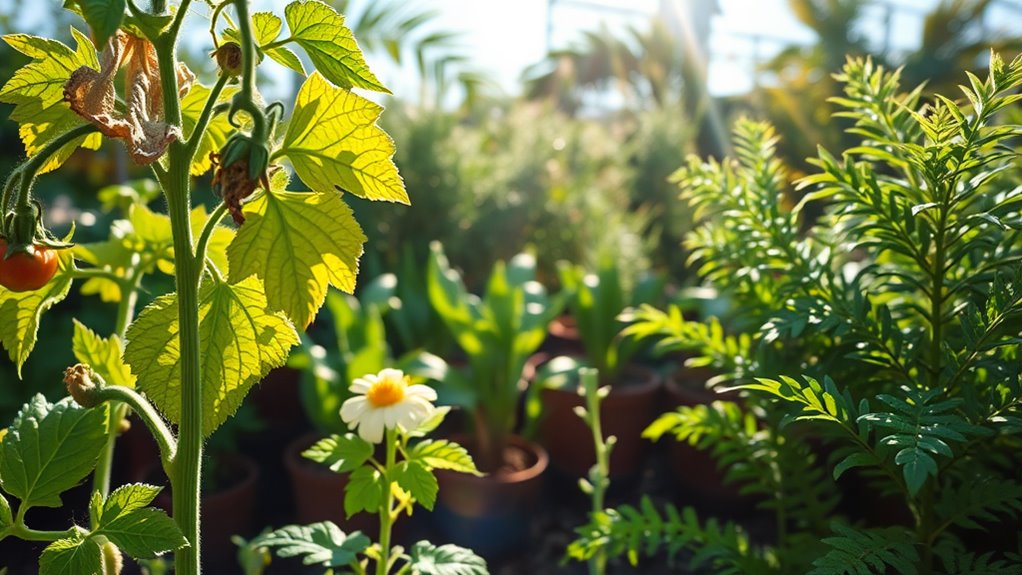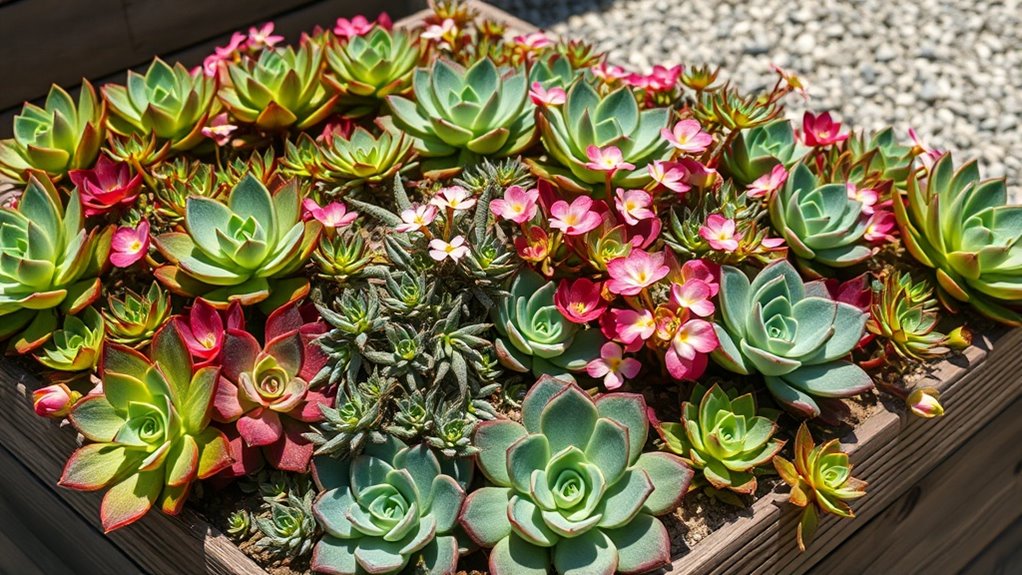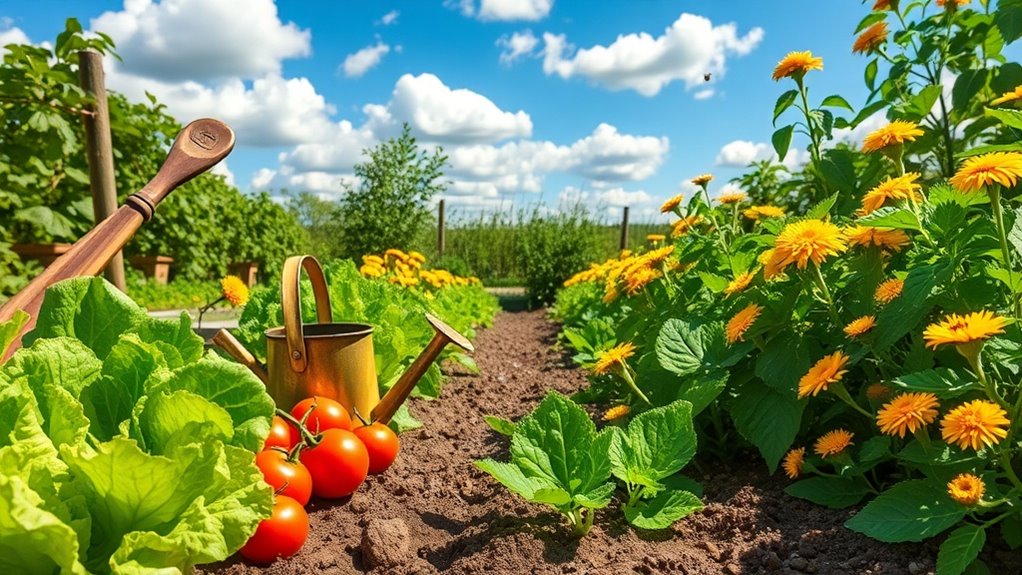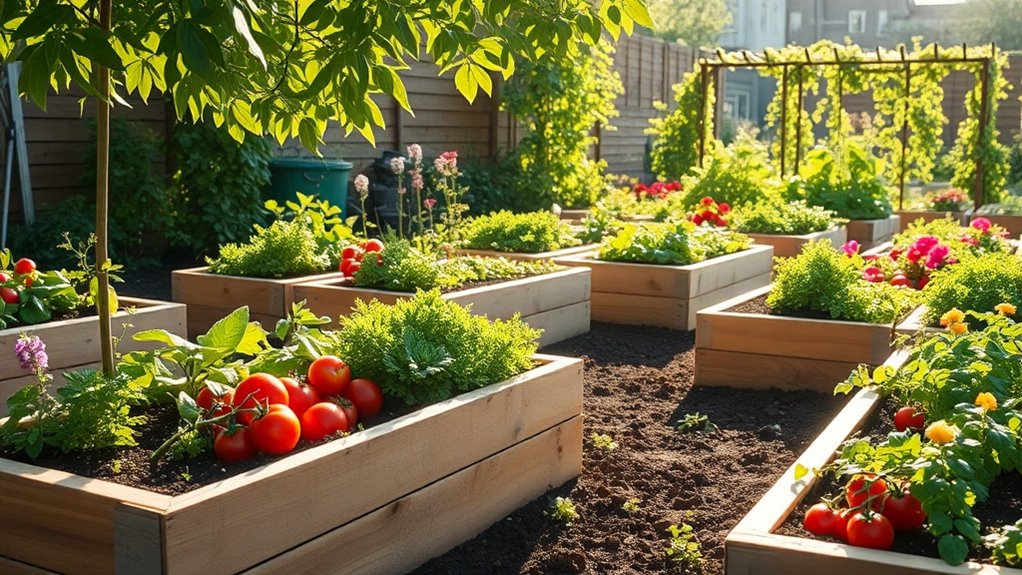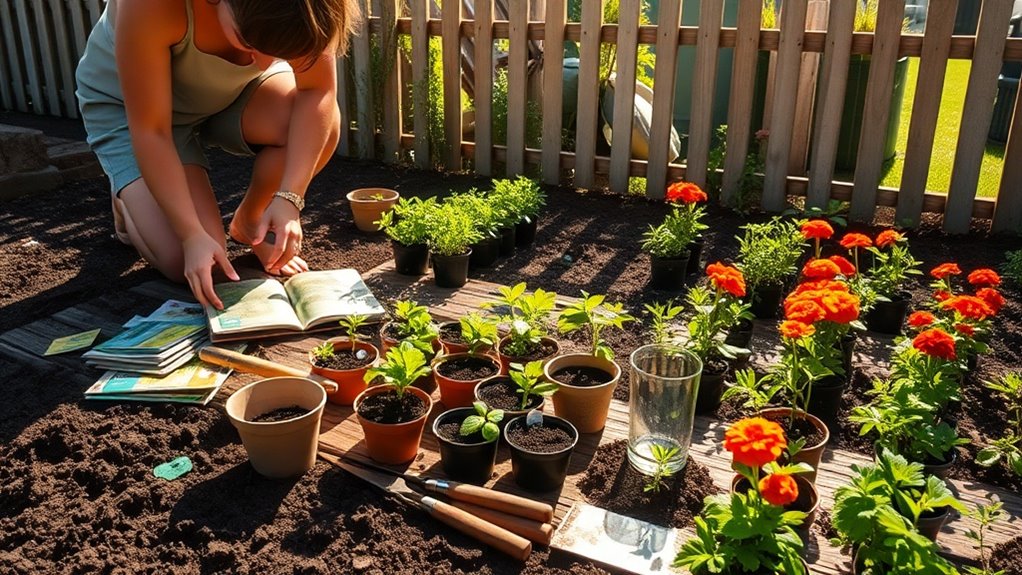7 Gardening Basics Everyone Thinks They Know – But Don’t
You think daily watering keeps your plants thriving, but it often causes root rot and shallow roots—test soil moisture first. You’re overlooking soil prep if you skip testing and proper aeration, leading to nutrient woes. Sunlight isn’t just full or shade; match plants to partial sun for best results. Over-pruning with dull tools invites disease, while wrong fertilizers burn roots. Pest traps harm beneficial insects, proving ineffective long-term. Keep going to unlock these insights for a healthier garden.
Key Takeaways
- Daily watering often leads to overwatering and root rot; test soil moisture first.
- Soil testing prevents nutrient imbalances; avoid exceeding fertilizer doses to stop root burn.
- Many plants thrive with 3-6 hours of morning sun, not full-day exposure.
- Over-pruning stresses plants and invites pests; time cuts carefully and maintain tools.
- Chemical traps harm beneficial insects and build pest resistance; monitor and adjust methods instead.
The Myth of Daily Watering
While you might think daily watering is essential for a thriving garden, it’s often a misconception that leads to overwatering and plant stress.
As one of the most pervasive gardening myths, daily watering ignores plants’ natural rhythms, causing root rot and shallow growth that weaken overall health.
You’re better off testing soil moisture first—poke your finger in to check if the top inch is dry—then water deeply but infrequently to mimic natural rainfall. By adopting deep watering technique, you can nourish plants effectively by watering only once a week to ensure soil moisture reaches the roots.
This practical strategy builds drought resistance and prevents diseases, helping you debunk gardening myths for a resilient, flourishing space.
Always adapt to your plants’ needs for optimal results.
Additionally, by incorporating expert watering techniques, you can further optimize plant hydration and promote healthier growth.
Soil Preparation Essentials Overlooked
Before you dive into planting, preparing your soil properly is essential, yet many gardeners overlook this foundational step that directly impacts your plants’ health and yield; regular soil testing can enhance plant health by addressing nutrient deficiencies early on.
First, test your soil’s pH and nutrient levels using a simple kit; it’s crucial for matching plant needs. Amend with organic matter like compost to improve drainage and fertility—don’t skip this if your soil’s compacted.
Aerate thoroughly to allow root penetration, and mix in balanced fertilizers based on test results.
Furthermore, soil testing is essential for identifying and remedying issues that could cause your garden to fail.
Sunlight Needs Beyond Full or Shade
Once you’ve prepared your soil, you’ll see that sunlight is just as vital for your plants’ vitality.
Beyond simple full sun or shade, you’ll encounter partial sun, filtered light, and dappled conditions that suit specific plants. For example, many perennials thrive with 3-6 hours of direct morning sun, avoiding harsh afternoon rays that can scorch leaves.
Measure your garden’s light by tracking daily patterns—use a sun calculator or observe shadows.
Choose plants like hostas for shady spots or lavender for brighter areas to prevent wilting and ensure robust growth.
Always adapt to your local climate for optimal results.
Don’t forget that soil preparation enhances nutrient availability and supports healthy root development.
To further promote plant health, remember to watch for signs of overwatering that could harm your thriving garden.
Pruning Techniques That Backfire
Pruning might seem simple, but you’ll quickly ruin your plants if you overlook common pitfalls, like over-trimming in the wrong season or making cuts that invite disease. To avoid disaster, focus on precise techniques that protect plant health. For thriving results, incorporate essential pruning techniques to enhance your garden’s growth rate significantly.
-
Over-prune aggressively: You’ll stress plants, reducing vigor and blooms, as they struggle to recover.
-
Ignore seasonal timing: Cutting during growth spurts invites pests and weakens structure.
-
Use dull tools: Ragged edges become entry points for infections, leading to decay.
-
Remove branch collars: This disrupts healing, increasing vulnerability to rot and breakage.
-
Neglect tool sanitation: Cross-contamination spreads diseases rapidly across your garden.
Incorporating expert insights from pruning mastery can help you enhance your gardening skills and achieve optimal plant health.
Fertilizer Choices and Common Errors
When you’re selecting fertilizers for your garden, focus on types that match your soil’s pH and nutrient needs to promote healthy plant growth.
You’ll evaluate options like organic versus synthetic based on their composition and your specific gardening goals.
Make sure you avoid common application errors, such as over-fertilizing or incorrect timing, to prevent plant damage and wasted resources.
[LIST OF 3 SUBHEADING DISCUSSION POINTS IN ENGLISH
Fertilizer choices and common errors play a key role in your garden’s success, so let’s break them down into three key points: understanding soil needs, avoiding overapplication, and timing applications correctly.
-
Test your soil annually to match fertilizers precisely, preventing nutrient imbalances that stunt growth.
-
Never exceed recommended doses; overfertilizing burns roots and pollutes soil, undermining your efforts.
-
Choose based on plant requirements, not trends; you’ll foster healthier ecosystems without guesswork.
-
Apply during cool seasons to maximize uptake; this ensures nutrients reach roots effectively.
-
Monitor plants weekly for signs like yellow leaves; quick adjustments save your garden from common pitfalls.
Fertilizer Types Selection
Selecting the right fertilizer type for your garden isn’t just about grabbing what’s on the shelf; it involves matching options like organic composts, synthetic granules, or liquid feeds to your soil’s specific needs and plant demands. You’ll test soil pH and nutrient levels first, then pick based on release speed and environmental impact for optimal growth.
| Fertilizer Type | Key Benefits | Ideal For |
|---|---|---|
| Organic Composts | Enhances soil health naturally | Vegetable beds |
| Synthetic Granules | Provides precise nutrients | Lawns and high-yield crops |
| Liquid Feeds | Quick absorption for plants | Potted plants and flowers |
| Slow-Release Pellets | Long-term nutrient supply | Trees and shrubs |
| Natural Manures | Boosts microbial activity | Organic farming setups |
This approach ensures your garden thrives efficiently.
Common Application Errors
While you’ve selected the ideal fertilizer for your garden, misapplying it can lead to poor plant health or environmental harm.
Even the best choices fail if you overlook timing, dosage, or method, potentially burning roots or polluting soil. Always test and adjust based on plant needs.
-
Over-fertilize cautiously: Exceeding recommended amounts stresses plants, causing nutrient burn—start with half strength and monitor growth.
-
Time applications wisely: Applying during dormancy wastes resources; fertilize actively growing seasons to maximize uptake.
-
Mix accurately: Incorrect dilution leads to imbalances—use precise measurements and follow labels to avoid toxicity.
-
Test soil first: Skipping tests results in excess buildup; regular analysis ensures you’re addressing actual deficiencies.
-
Water properly: Inadequate irrigation after application prevents nutrient absorption, so water deeply to integrate fertilizer effectively.
Seed Starting Misconceptions
Starting seeds can be tricky, but you’ll often encounter misconceptions that lead to disappointing results.
For instance, many think seeds germinate faster in direct sunlight, but this dries out soil and scorches young plants—use indirect light or grow lamps instead.
Another myth is that deeper planting protects seeds; in reality, it prevents emergence, so follow packet depths precisely.
Don’t assume all seeds thrive in the same soil; choose sterile, well-draining mixes to avoid damping off.
Test soil temperature with a thermometer—most need 65-75°F for optimal sprouting—and water from the bottom to prevent rot.
Pest Control Strategies That Fail
You’ve encountered ineffective chemical traps that promise pest control but often leave you with persistent infestations due to their poor design and unreliable bait.
Misguided organic solutions, like unproven homemade sprays, fail to target pests effectively and can even disrupt your garden’s ecosystem. However, unconventional remedies provide reliable alternatives that draw from proven natural strategies to combat pests without causing harm.
Now, let’s explore these shortcomings so you can avoid them and implement smarter strategies.
Instead, consider natural methods that leverage easily accessible staples to foster a healthy garden ecosystem.
Ineffective Chemical Traps
Although chemical traps promise quick pest relief in your garden, they often disappoint due to their limited effectiveness against adaptive insects.
You’ll waste time and money on these traps, as pests evolve to evade them, leaving your plants vulnerable and your efforts frustrated.
-
Pests build resistance swiftly, neutralizing the chemicals’ impact after just a few uses.
-
Traps harm beneficial insects, disrupting the natural balance and worsening infestations.
-
Environmental factors like rain dilute the chemicals, reducing their reliability.
-
They target only specific pests, allowing others to thrive unchecked.
-
Improper handling leads to inconsistent results, demanding precise application you mightn’t achieve.
Misguided Organic Solutions
While organic pest control methods promise a natural alternative, many misguided strategies fall short, leaving your garden exposed to persistent infestations.
You might rely on homemade garlic sprays, but they often fail against resilient pests like aphids, washing off in rain without lasting impact.
Don’t assume companion planting always works; pairing marigolds with tomatoes won’t deter nematodes if soil conditions aren’t right.
Beneficial insects, such as ladybugs, can escape or starve without proper habitat, so you must create supportive environments.
Instead, test and monitor methods rigorously to avoid these pitfalls and protect your plants effectively.

